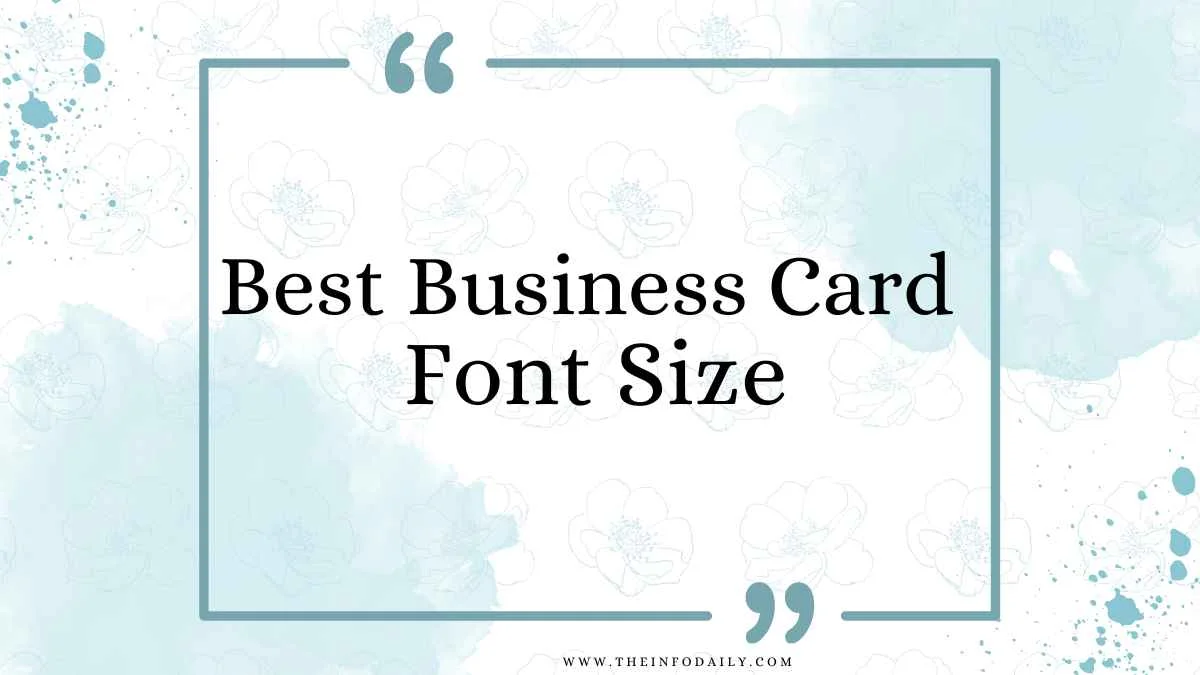Effective Business Cards speak for themselves. However, with such a small font, it may be even less than that.
How large should text be on business cards? Specifications, typefaces, special finishes… – we are here for you.
Finding the Holy Grail of Business Cards font sizes
Choosing a font size for your Business Cards that is appropriate is pretty straightforward if one adheres to certain elementary guidelines.
To begin, you need to be aware that font sizes are expressed in terms of points. This is the number that you perhaps normally see in your Word or Photoshop and any other software file when you are changing the size of the text. Over 200 years, the size of a point has fluctuated within the bracket of 0.18 and 0.4 millimeters. And there are approximately 72 points in one inch. The point is, points are small.
Now that the corresponding measurements have been placed and the corresponding units established, we can jump to it and set a basic ideal size. The ideal font size for Business Cards- should be 8pt. Or above.
If you absolutely must shrink, six pt would be the minimum point. These cards can be collected with a command of a fee (which also involves other marketing tools such as gimmicks) and contain 7pt and 5pt warning text.
Going beyond that size will help the persons who read the card decide the next step. And if you’re using your cards as something like passive advertising tools, T&Cs should be at least 6pt in size.

What if you’re using special finishes?
These specifications are suitable for regular print. The only other factor is when you are doing special finishes such as Gold Foil and Spot Gloss, the minimum font size for Business Cards is 10pt. Other, your pools will come from the small gaps in your typography. (Pooling does not concern swimming just to be clear. It refers to anything that goes over the boundaries of design because the gaps are too small, and it is not to be found anywhere.)
Size isn’t everything.
So now you know how to choose the best font size for your Business Cards, but there are some other factors to take into consideration as well. Size is not the only factor to consider when measuring readability. Recololor, weight, and style also play a huge role in the comfort of usage. Do not skip any of the boxes with the help of the following tips:
Font color
Orientations of color within the text can be regarded as a science in terms of design. If you want your text to grab attention, go for solid colors consisting of one or two inks only (or a combination of the four CMYK ink colors) that go on the pages. CMYK stands for the four colors of ink used in most printing processes; cyan, magenta, yellow, and key (which refers to black ink). Hence, while “k” should not comprise more than 100%, as soon as it approaches this figure, it gives less opportunity for eye fatigue and the printed text looks better.
In addition to your choice of font colors, pay attention to your background and the rest of the design. Do not use patterns with “vibrating colors” when different colors are used, whose brightness causes a clash that deteriorates to reading of the text. Examples of vibrating colors are:
- Red and green
- Blue and orange
- Green and blue
For color combinations that complement, you can consider these instead.
Font weight
Choose between bold, medium, and thin. The majority of typefaces can be used in several weights and belong to a larger family of fonts. It is also true that bolder fonts are more readable than their thinner counterparts and this is especially useful in the printed form. When doing some special finishes for your Business Cards, avoid very thick (and very thin) fonts to prevent pooling and misprinting.

Font style
Whenever you have to decide on a typeface, it’s best to put the issue of legibility in your considerations first. Use neither decorated fonts nor calligraphy styles while writing contact details and contact information. You may want to maintain clarity.
There is no question that sans serif fonts, which do not have extensions at the end of the strokes, are also easier and clearer making it appropriate when typed in small fonts and contact-related information. On the other hand, serif fonts have loops and curves which make them a bit old-fashioned and ones with more characters. It is within one font family that you can create an aligned aesthetic by using different weights or mixing a Sans Serif and a Serif or a Script font.
Logos and names are usually best enhanced by the use… of script fonts since they adopt a type that resembles swooping handwriting. In sharpening tool use, do not shy away from such usage based on size like for instance small letters for phone contact addresses. Business Card get smaller in size and their typography and further details get lost without which the card loses some of its majesty and charm.


1 thought on “What’s the perfect font size for Business Cards?”